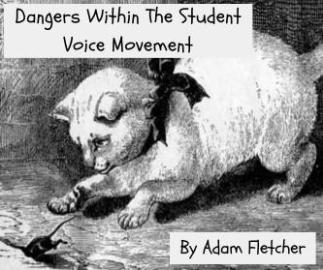The Diversity Crisis in Taxpayer-Funded Education
With the happenings of “white flight,” unconstitutional school funding systems, the School-to-Prison Pipeline, the consequences of No Child Left Behind, Race to the Top, and anti-grassroots corporatized School Choice…the education community in the nation has arrived at a point of hostility toward diversity. Constantly, diversity within the school has become something that governmental and societal action actively discourages from happening, even when the benefits are far more beneficial than perceived risk conceived out of prejudice.
When education has a segregation problem, education also has a teaching and learning problem and it prevails as long as the former subsists. When children have a lack of diversity in the classroom and within communities, whether they are macro or micro communities, opportunities of learning about different cultures and communities do not occur, thus allowing for stereotypical, racist, sexist, classist, xenophobic, and nativism attitudes to
 Disrupting status quo, challenging social norms, and radically transforming schooling forever are some of the wonderful dangers that excite students and adults who advocate for student voice today. However, threats to the education system withstanding, many of the dangers to the student voice movement are within the movement itself. This article explores five dangers within the student voice movement.
Disrupting status quo, challenging social norms, and radically transforming schooling forever are some of the wonderful dangers that excite students and adults who advocate for student voice today. However, threats to the education system withstanding, many of the dangers to the student voice movement are within the movement itself. This article explores five dangers within the student voice movement.
Wrangled into an adult-driven system by force, students are almost always neglected in educational leadership. When they are asked, they’re usually last and their voices are generally tokenized. Despite this, like never before we can hear students’ opinions about topics like the achievement gap, charter schools, privatization, rural education, violence and safety, and year-around schools. They’re rallying outside state capitals, speaking in school board meetings, and demanding change specifically from students’ perspectives.
More than a decade ago, I began a campaign to promote more than student voice. Studying thousands of
When education has a segregation problem, education also has a teaching and learning problem and it prevails as long as the former subsists. When children have a lack of diversity in the classroom and within communities, whether they are macro or micro communities, opportunities of learning about different cultures and communities do not occur, thus allowing for stereotypical, racist, sexist, classist, xenophobic, and nativism attitudes to
Dangers Within The Student Voice Movement
 Disrupting status quo, challenging social norms, and radically transforming schooling forever are some of the wonderful dangers that excite students and adults who advocate for student voice today. However, threats to the education system withstanding, many of the dangers to the student voice movement are within the movement itself. This article explores five dangers within the student voice movement.
Disrupting status quo, challenging social norms, and radically transforming schooling forever are some of the wonderful dangers that excite students and adults who advocate for student voice today. However, threats to the education system withstanding, many of the dangers to the student voice movement are within the movement itself. This article explores five dangers within the student voice movement.Wrangled into an adult-driven system by force, students are almost always neglected in educational leadership. When they are asked, they’re usually last and their voices are generally tokenized. Despite this, like never before we can hear students’ opinions about topics like the achievement gap, charter schools, privatization, rural education, violence and safety, and year-around schools. They’re rallying outside state capitals, speaking in school board meetings, and demanding change specifically from students’ perspectives.
More than a decade ago, I began a campaign to promote more than student voice. Studying thousands of

